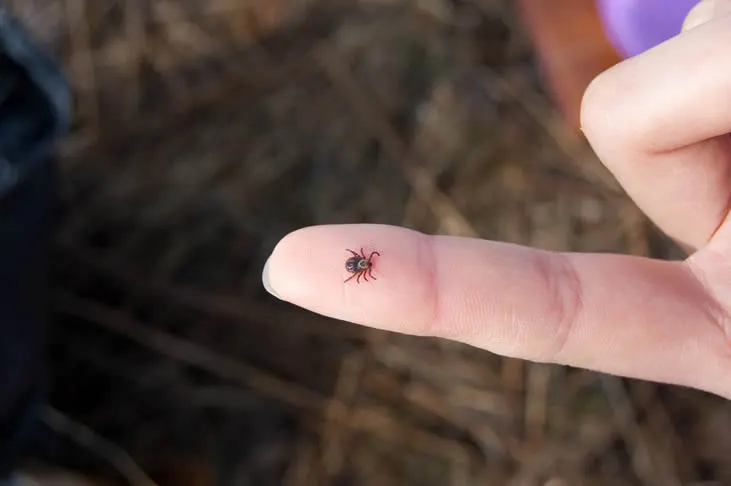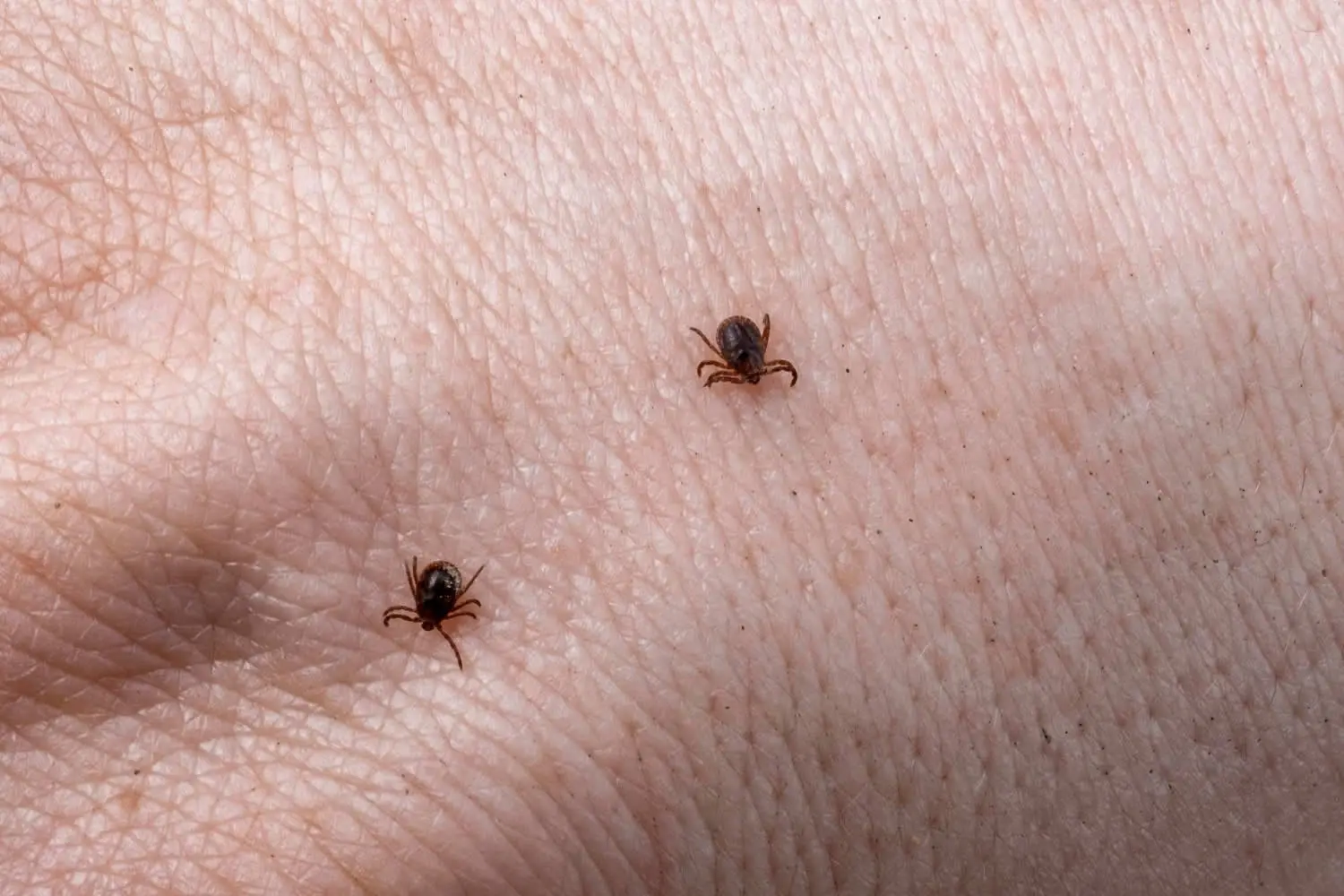Tick Bites
A tick bite is a wound caused by a tick that attaches to the skin and feeds on blood. Ticks are small, blood-sucking arachnids that can transmit various diseases to humans and animals, such as Lyme disease, Rocky Mountain Spotted Fever, and Tularemia. A tick bite can cause a small bump, swelling, redness, itching, or pain at the site of the bite. Some people may also develop a rash, fever, headache, fatigue, or joint and muscle pain after a tick bite. A tick bite should be removed as soon as possible with fine-tipped tweezers and the area should be cleaned with soap and water or rubbing alcohol. If you have any signs or symptoms of a tick-borne disease, you should contact your doctor immediately. You may need antibiotics or other treatments depending on the type of infection. To prevent tick bites, you should avoid areas where ticks live, such as wooded and grassy places, wear long sleeves and pants, use insect repellent, and check your body and clothing for ticks after being outdoors.

What are the signs and symptoms of Tick Bites?
Some of the signs and symptoms of tick bites are:
- A small hard bump or sore at the site of the bite
- Swelling, redness, itching, or pain around the bite
- A rash, which can be circular, oval, or spotted, and may expand over time
- Fever, chills, headache, fatigue, muscle and joint aches
- Allergic reactions, such as difficulty breathing, chest pain, or swelling of the face or mouth
- Neurological problems, such as paralysis, numbness, or tingling
- Signs of infection, such as pus, red streaks, or warmth around the bite
What treatments are available at the dermatologist for Tick Bites?
Some of the treatments that are available at the dermatologist for tick bites are:
- Topical steroids and oral antihistamines to relieve itch and inflammation caused by tick bites.
- Surgical removal of tick bite granulomas, which are small, hard lumps that form around the bite site.
- Antibiotics or other medications to treat tick-borne diseases, such as Lyme Disease, Rocky Mountain Spotted Fever, or Tularemia, if diagnosed by tests.
- Allergic reactions, neurological problems, or signs of infection after a tick bite may require emergency care or hospitalization.

How to Remove a Tick Safely and Effectively
The best way to remove a tick safely and effectively is to use clean, fine-tipped tweezers to grasp the tick as close to the skin’s surface as possible and pull upward with steady, even pressure. You should not twist or jerk the tick, as this can cause the mouth-parts to break off and remain in the skin. If this happens, you should remove the mouth-parts with tweezers or leave them alone and let the skin heal. After removing the tick, you should thoroughly clean the bite area and your hands with rubbing alcohol or soap and water. You should never crush a tick with your fingers or use folklore remedies such as nail polish, petroleum jelly, or heat to make the tick detach from the skin. You should dispose of a live tick by putting it in alcohol, placing it in a sealed bag/container, wrapping it tightly in tape, or flushing it down the toilet. You should also keep the tick in a plastic bag in case you develop any symptoms that may be caused by a tick-borne infection. If you have any signs or symptoms of a tick-borne disease, such as a rash, fever, headache, or joint pain, you should see your doctor as soon as possible and tell them about your recent tick bite. You may need antibiotics or other treatments depending on the type of infection.
The Dangers of Tick Bites
The dangers of tick bites are that they can cause allergic reactions, skin infections, and transmit various diseases to humans and animals, such as Lyme disease, Rocky Mountain Spotted Fever, Tularemia, and others. These diseases can have serious and sometimes life-threatening consequences if not treated promptly. Some of the symptoms of tick-borne diseases include fever, chills, headache, fatigue, rash, muscle and joint pain, and neurological problems. To avoid tick bites, it is important to prevent exposure to ticks by wearing protective clothing, using insect repellent, avoiding areas where ticks live, and checking and removing ticks from the body and clothing after being outdoors.
FAQ About Tick Bites
What do tick bites look like?
Tick bites can cause a small bump, swelling, redness, itching, or pain at the site of the bite.
Where do ticks bite people?
Ticks prefer warm, moist areas of the body, such as the armpits, groin, hair, back of the knees, belly button, ears, and waist.
How are tick-borne diseases diagnosed and treated?
Tick-borne diseases are diagnosed by your doctor based on your symptoms, history of exposure to ticks, physical examination, and laboratory tests. Some tests may include blood tests, skin biopsies, or spinal taps. Tick-borne diseases are treated with antibiotics or other medications depending on the type of infection.
Is there a dermatologist near me in Fort Wayne that offers treatment for Tick Bites?
Yes. At our Fort Wayne dermatology office we offer treatment for Tick Bites to patients from Fort Wayne and the surrounding area. Contact our office today to schedule an appointment.

